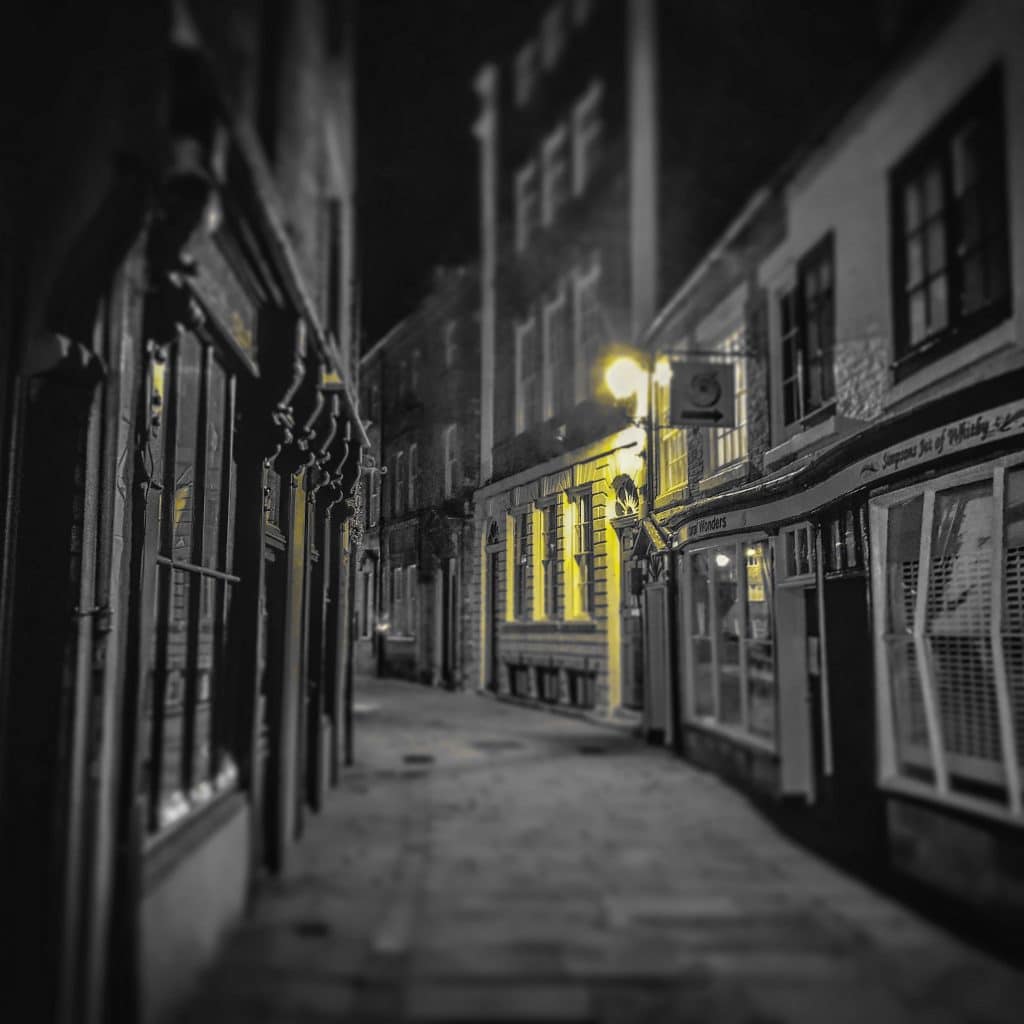Some Spooky Yorkshire Tales for Halloween

We pick our favourite spooky Yorkshire tales guaranteed to raise the hairs on the back of your neck!
The Grey Lady of East Riddlesden Hall, Keighley
The stunning East Riddlesden Hall, a National Trust property in Keighley, is noted as one of the most haunted houses in Britain. It is said that the presence of its most famous ghost is that of The Grey Lady. The Grey Lady apparently came to haunt the house after being bricked up within a room of the house to suffer a slow death, following the discovery by her husband of her infidelity. The Grey Lady is still in search of her lost lover, could she also be the one responsible for objects in the house being moved around? The staff have even assigned her a chamber where she has been sighted the most.
East Riddlesden was built in the 1630s so we are sure she is not the only one to haunt the old house, in fact there are sightings of The Blue Lady. She has also been spotted on occasions after drowning in the pond.
Find out more about East Ridlesden Hall on the National Trust website.
Mad Alice
If you live in York or know its Snicketts or Snickelways well, you’ll be very aware of Mad Alice Lane (also known as Lund’s Court), it is often cold and eerie to walk down. And no wonder it is named after Alice who lived there and was hung in 1825 for poisoning her husband. The story could be folklore or could be true who is to know but Mad Alice does exist and you can meet her in person as she takes you on a tour of the most haunted streets of York.
Find out more about Mad Alice’s tours www.thebloodytourofyork.co.uk
Dick Turpin
We like to romanticise about certain characters especially a highwayman and Dick Turpin definitely falls into that category. At the age of 25 he joined a gang of deer thieves, soon to be followed by poaching, burglary, thieving horses and killing. He killed one of his accomplices and then a man who tried to capture him down south and then in 1737 fled to Yorkshire. He was imprisoned as John Palmer but his true identity was discovered and he was executed by hanging in 1739 in Knavesmire, York as a horse thief. His grave can be found in York and you can even pop in to the Black Swan for a pint, where a room is named after the famous highwayman. Can you hear the horse hooves galloping down one of York’s cobblestone streets?

Dracula
We lay the scene in a perfectly gothic setting of Whitby, Windy Whitby, famous for its abbey ruins, its churches,its semi-precious stone jet (often worn as a mourning jewel) and the occasional eerie sea fret. It really was the perfect place for Bram Stoker to stay. In 1890 he visited the harbour town and stayed at a guesthouse at 6 Royal Crescent. His stay greatly inspired Dracula which was published in 1897. Five years before Stoker’s stay Dmitry, from Narva was shipwrecked below East Cliff, Bram Stoker wrote of Demeter from Varna carrying Dracula with boxes of earth to Whitby.
Bram Stoker also used the name ‘Swales’ for Dracula’s first victim in Whitby. ‘Swales’ is the name of one of the empty graves in St Mary’s churchyard.
Within the novel, Mina Murray records in her diary “Right over the town is the ruin of Whitby Abbey, which was sacked by the Danes… It is a most noble ruin, of immense size, and full of beautiful and romantic bits; there is a legend that a white lady is seen in one of the windows.”Whitby holds many other haunting tales including Constance who was a nun bricked up within the Abbey and left to die after being discovered for falling in love with a knight.
You can read more about Whitby’s Dracula connection on the English Heritage website.
Mother Shipton’s Cave
The birthplace of a real life witch Ursula Southill known as Mother Shipton, married in York to Toby Shipton a local carpenter. She told fortunes and made predictions throughout her life. Her name became attached to horrific events across the UK and abroad, she even had a moth named after her, that has a witchlike profile on its wings. Her end of day prophecies did fortunately not come true. You can visit Mother Shipton’s Cave and the Petrifying Well throughout the year, however the Halloween Haunted Village is open between 24th October and 1st of November. It is told the Petrifying Well holds water that will turn you to stone upon touching it.
Do you dare to try? Plan a visit to Mother Shipton’s Cave.
Treasurer’s House
For one of York’s greatest ghost stories head to Treasurer’s House, within it’s cellar, can you feel the chill? When the house was being restored in the 1950’s tradesmen swear they not only sighted Roman centurions marching, they tell the tale of the ghost walking straight through them. Treasurer’s House sits about knee height above a Roman road. When you visit the house you can even view a short video of the very man who witnessed this and hear of the many sightings since.
Cellar tours can be booked for only £4 per adult. You can read more https://www.nationaltrust.org.uk/features/by-the-look-of-you-youve-seen-the-romans
Bolton Abbey
Ruined after the dissolution of the monastries thanks to Henry VII, Bolton Abbey is said to be haunted by one of the monks, (named the Black Cannon) that died there just before the dissolution. Why not venture there this Halloween to see if you can spot his dark cloak and hat and hear his footsteps?! Bolton Abbey are also hosting a pumpkin trail, starting at Strid Wood. Bookings made at www.boltonabbey.com
Fountains Abbey
You can see a floodlit Fountains Abbey up until Sunday 25th October, we can’t think of anything more haunting, than this forbidding but beautiful ruin. This Cistercian Monastery is reported amongst the most haunted sites of Yorkshire. Step inside the Chapel of Nine Altars to place a close ear and listen out for the ghostly chanting choir. it is believed that they are not the only souls to roam the the Abbey.
Find out more on the National Trust website.
Article researched & written by Sarina @ https://www.instagram.com/yorkshireinteriorsevents/

